Will an institution hold 8% of Bitcoin pose a threat to the future of BTC?

Reprinted from jinse
04/29/2025·13DSource: Bitcoin Magazine; Translated by: Tao Zhu, Golden Finance
Institutional investors have surged in holdings of Bitcoin over the past year, with about 8% of the total Bitcoin supply currently in the hands of major entities, and that number is still climbing. ETFs, listed companies, and even nation-states have begun to hold a large amount of Bitcoin. This raises some important questions for investors. Is the growing growth of institutional investors a good thing for Bitcoin? As more and more BTC is locked in cold wallets, Treasury bonds and ETFs, is our on-chain data losing reliability? In this analysis, we will dig into the data, track the flow of funds, and explore whether Bitcoin’s decentralized spirit is truly at risk or is simply evolving.
New whale
Let's start with the financial position statement of listed companies. Large companies including Strategy, MetaPlanet, etc. have accumulated more than 700,000 BTC in total. Considering that the total supply of Bitcoin is capped at 21 million, this accounts for about 3.33% of the total supply of BTC in the future. While this supply cap cannot be reached in our lifetime, its implications are obvious: these institutions are making long-term bets.
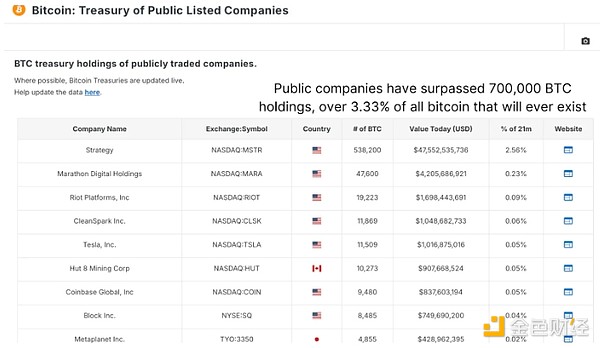
Figure 1: Top BTC holdings for listed companies.
In addition to the Bitcoin directly held by enterprises, we can see from the EFT cumulative traffic (BTC) chart that ETFs also control a considerable portion of the market. As of this writing, the spot Bitcoin ETF holds approximately 965,000 BTC, slightly below 5% of the total supply. This figure fluctuates slightly, but remains the main force affecting daily market dynamics. If we combine corporate Treasury bonds and ETF holdings, the figure will climb to more than 1.67 million BTC, accounting for about 8% of the total theoretical supply. But the story goes far beyond that.
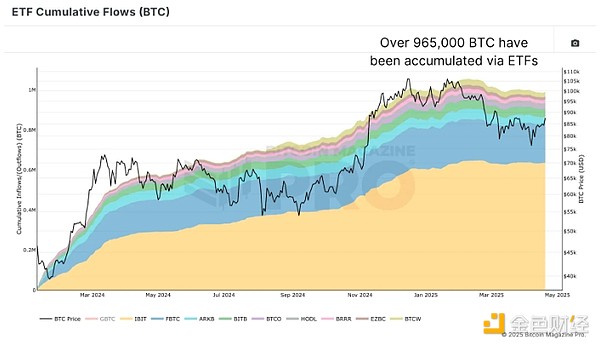 Figure 2: ETFs enhance investors' interest in BTC.
Figure 2: ETFs enhance investors' interest in BTC.
In addition to Wall Street and Silicon Valley, some governments are now active in the Bitcoin field. Through reserves such as sovereign purchases and strategic Bitcoin reserves, nation-states hold a total of about 542,000 Bitcoins. Adding to previous institutional holdings, we concluded that institutions, ETFs and governments hold more than 2.2 million Bitcoins. On the surface, this accounts for about 10.14% of the total Bitcoin supply 21 million.
Forgotten Satoshi and the lost supply
Not all 21 million BTC can be accessed. According to estimates of the 10+ years HODL Wave data, which measures currencies that have not been moved in a decade, more than 3.4 million BTC may be lost forever. These include Satoshi's wallet, currency from the early mining era, forgotten phrases, and even USB drives in landfills.
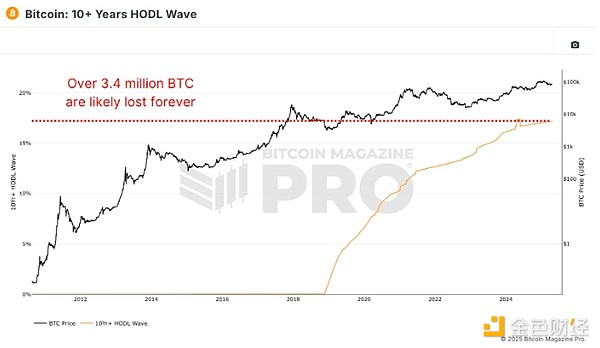
Figure 3: It is conceivable that the number of lost BTC exceeds 3.4 million.
Currently, there are about 19.8 million BTC in circulation, and about 17.15% of it is expected to be lost, so the actual supply is close to 16.45 million. This completely changed the current balance. Institutional BTC held by institutions rose to about 13.44% by more practical supply. This means that about 1 of every 7.4 BTC on the market has been locked by institutions, ETFs or sovereign states.
Are institutions controlling Bitcoin?
Does this mean that Bitcoin is being controlled by enterprises? None yet. But this does show that its influence is growing, especially in terms of price behavior. Judging from the correlation chart of the S&P 500 index and Bitcoin, the correlation between Bitcoin and traditional stock indices such as the S &P 500 index or the Nasdaq index has been significantly enhanced. As these large entities enter the market, BTC is increasingly seen as a “risk-favorite” asset, meaning its prices tend to fluctuate with changes in investor sentiment in traditional markets.
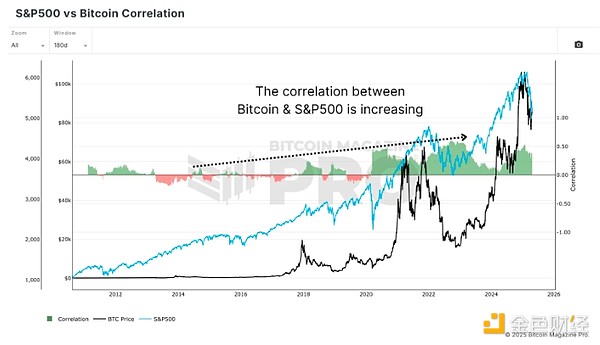
Figure 4: The correlation between Bitcoin and the S&P 500 is increasing.
This may be beneficial in a bull market. As global liquidity expands and risky assets perform well, Bitcoin is now expected to attract larger inflows than ever before, especially as pensions, hedge funds and sovereign wealth funds begin to allocate even a small portion of their portfolios. But there is also a trade-off. As institutional adoption deepens, Bitcoin becomes more sensitive to macroeconomic conditions. Central bank policies, bond yields and stock volatility are all starting to be more important than ever.
Despite these changes, more than 85% of Bitcoin is still out of the hands of institutions. Retail investors still hold the vast majority of Bitcoin supply. While ETFs and corporate vaults may stockpile large amounts of Bitcoin in cold wallets, the market remains highly decentralized. Critics believe that the usefulness of on-chain data is fading. After all, if so much BTC is locked in an ETF or a dormant wallet, can we still draw accurate conclusions from wallet activity? This concern makes sense, but it has not appeared recently.
Need to adapt
Historically, most of Bitcoin’s trading activity has taken place off-chain, especially on centralized exchanges such as Coinbase, Binance and (formerly) FTX. These transactions rarely appear on the chain in meaningful ways, but still affect prices and market structure. Nowadays, we are facing a similar situation, just with better tools. ETF capital flows, company filings, and even state purchases are subject to information disclosure regulations. Unlike opaque exchanges, these institutional participants often have to disclose their positions, which provides analysts with a lot of tracking data.
In addition, on-chain analysis is not static. Tools like MVRV-Z ratings are constantly evolving. By narrowing the focus to the MVRV Z rating 2-year rolling average instead of full historical data, we can better capture current market dynamics without being affected by long-term lost tokens or inactive supply.
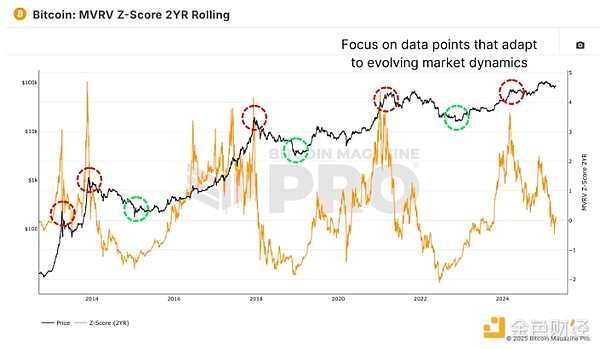
Figure 5: A more targeted 2-year rolling MVRV Z score can better capture market dynamics.
in conclusion
All in all, institutional investors ' interest in Bitcoin has risen unprecedentedly. Between ETFs, corporate bonds and sovereign entities, Bitcoin has exceeded 2.2 million, and this number is growing. This influx of funds undoubtedly stabilized prices during a period of weak markets. However, this stability also brings some entanglement. Bitcoin is increasingly connected to the traditional financial system, and its correlation with stocks and broader economic sentiment is growing.
However, this does not mean the end of Bitcoin’s decentralization or on-chain analytics. In fact, as more and more BTC is held by identifiable institutions, the ability to track capital flows will become more accurate. Retail investors still dominate, our tools have become smarter and more sensitive to market changes. The spirit of Bitcoin’s decentralization is not threatened, it is just maturing. As long as our analytical framework develops with Bitcoin, we can better cope with any changes in the future.


 panewslab
panewslab